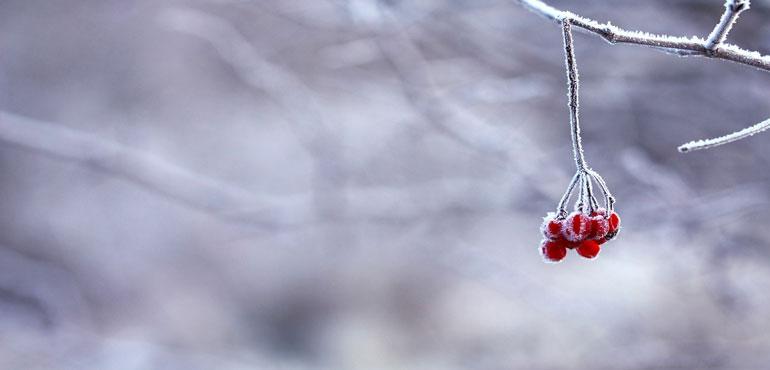Back to forecast
Frost: What Causes This Phenomenon?
November 1, 2025 at 02:44 PM EDT
By WeatherBug Meteorologist, Mark Paquette

Perhaps nothing signifies a cold winter's night leading into a frigid winter morning than frost on your car's window, your front lawn, or on autumn's leftover leaves.
Frost forms when water vapor deposits on a substance that is below freezing (32 degrees Fahrenheit or 0 degrees Celcius). Think of it as dew that is frozen. Frost, or dew as a matter of fact, will form when the surface temperature falls below an airmass' dewpoint. Put another way, the surface becomes too cold to hold the amount of moisture that the air has thus the moisture is expelled in the form of frost or dew. When that happens, dew forms (of frost is the temperature is below freezing). There are several different types of frost and different qualities of frost.
Frost forms when water vapor deposits on a substance that is below freezing (32 degrees Fahrenheit or 0 degrees Celcius). Think of it as dew that is frozen. Frost, or dew as a matter of fact, will form when the surface temperature falls below an airmass' dewpoint. Put another way, the surface becomes too cold to hold the amount of moisture that the air has thus the moisture is expelled in the form of frost or dew. When that happens, dew forms (of frost is the temperature is below freezing). There are several different types of frost and different qualities of frost.
Truth be told, just like the saying that there are no two snowflakes exactly alike, a similar description is apt for frost. Every frost is slightly different than previous or future frosts. The reason for this is the different atmospheric conditions that are in place when frost forms. A common time for frost to form is a clear night in autumn, winter or spring. This weather leads to great radiational cooling conditions allowing heat to exit into the atmosphere and cool the ground. When clouds are present, they act as a "thermal blanket" for the atmosphere and they keep the surface warmer.
What makes a clear night even better for frost formation is when the winds are light or clam. This allows a maximum amount of heat energy to escape into the atmosphere as no or little mixing of the atmosphere occurs. Often times, with clear skies and calm winds, cooled surfaces near the ground can be 10 degrees Fahrenheit cooler than the surrounding air. If this "supercooled" surface is below the dewpoint of the air, dew (or frost if the temperature is below freezing) will form. This is the most common way frost forms in your backyard and is called radiation fog.
Local topography can also play a role in the formation of frost. Cold air is more dense than warm air and this law of physics means that cool air will settle in valleys at night. Thus, valley locations are more prone to frost (and they tend to be calmer than higher elevations as well so these factors correlate with each other). This type of frost is also an example of radiation frost.
Some different ways frost can form and types of frost are white frost (formed when the below freezing air has a relatively high amount of moisture), advection frost (when cold air travels over a relatively mild surface), window frost (you can see an example of this on cold winter days when frost forms on the inside of a single plane window) and rime (often forms on planes as the surface is very cold but also comes in contact with a wet surface, ie. clouds).